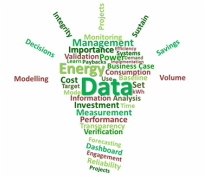
There have always been opportunities and incentives to game markets, and the emerging market for metered energy efficiency will be no different. In reality, a market with properly aligned incentives will drastically reduce the industry-wide bias toward over prediction and make the whole system more accurate, transparent, and enforceable. As in other markets, it will the regulator's role to put in place and enforce rules that ensure a fair and transparent marketplace.
In modeled performance programs, where rebates are paid in advance based on the results of engineering models or deemed predictions, there exist substantial incentive to inflating savings predictions. Even without counting the bias of the auditor or market tipping the scales (and there is little evidence that in the current market there is a concerted effort to do so), the engineering tools regulators require have a massive bias towards overestimation. In California, the Title24 HERSII based energy model required until earlier this year, overpredicted energy savings by nearly 300 percent (CA solution: www.CalTRACK.org) while New York and other states overestimation ran closer to 150 percent.
In pay-in-advance model of energy efficiency, we don’t measure results in a usable way and instead attempted to ensure good outcomes by micromanaging every step of the retrofit progress with an avalanche of regulation. A CPUC ruling in August summed it up, stating that “Program Administrator expenditures on costs other than customer rebates appear excessive, as they have come to represent approximately half of portfolio expenditures.” In other words, we are spending $1 on administrative costs to try and make sure the other $1 is spent wisely -- and then failing.
Some who argue for continuing the current programmatic approach to efficiency and point to the potential for gaming in a metered market as a reason to stick with rebates and program implementers. One anecdote that is repeated over and over again in energy efficiency circles as an example of potential gaming, tells the story of a contractor who targeted families with graduating seniors, knowing that when they went off to college, bills would go down, creating “savings.”
While this type of gaming is certainly possible, it would actually be much easier to regulate and police in a pay-for-performance model than in our current system.
Just as insider trading is illegal in financial markets, the gaming of energy efficiency savings by explicitly targeting populations based on customer attributes that will lead to decreases in use without intervention or investment, should also be considered gaming and fraud. Just like insider trading and other market regulations are illegal and prosecuting, fraud in measuring energy savings should be made illegal, aggressively prosecuted, and be grounds for debarment from participating in the market.
Fortunately, it turns out that just as with insider trading or even credit card fraud, it is harder than one thinks to game the energy efficiency markets without leaving fingerprints in the data. By looking at data in the aggregate, regulators can spot anomalies, investigate, and catch and prosecute illegal activity.
Like all markets, it is possible for bad actors to game in energy efficiency, and this is true both in today’s programs and in future metered performance markets. However, this potential should be used as an excuse to stick with the status quo. Regulating these new efficiency markets will require focus by regulators, however, we have the data and tools to ensure a fair and open market. We can learn for experiences in the past, such as standard offer programs from the 90s, as well as what has worked in other markets to ensure trust.
In this new world of measured efficiency, regulators can focus on protecting customers and regulating the marketplace to ensure savings are real and trustworthy. We should not let the perfect be the enemy of the good in energy efficiency and focus on learning from the past and developing data driven solutions so that efficiency can take its place as carbon free low-cost source of demand-side capacity.

 RSS Feed
RSS Feed